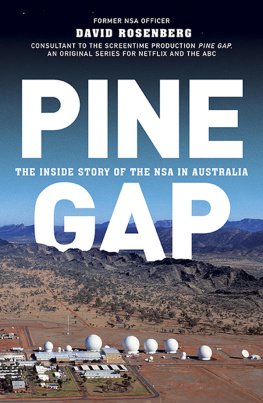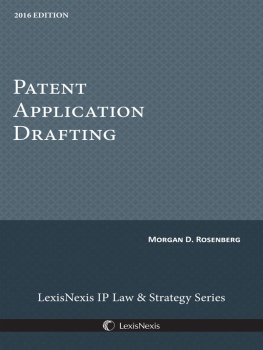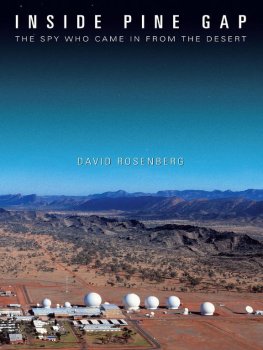I dedicate this book to Louisewife, mother, and singer extraordinaire
CONTENTS
DISCLAIMER FROM THE NSA
The views and opinions expressed herein are those of the author and do not necessarily reflect those of the NSA/CSS. Furthermore, NSA/ CSS does not warrant the accuracy of any information the author has included regarding the Agency, its alleged activities, personnel, operations, physical description or organisational structure. Open sources cited in this book serve to provide background, amplify references, or introduce related information, but not all details in the open citations may be accurate.
LTG KEITH ALEXANDERDIRECTOR NSA/CHIEF CSS:
The majority of our nations intelligence for counterterrorism,
hard targets and support to military operations comes from
the National Security Agency / Central Security Service.
For the good of the nation, it is imperative that NSA/CSS
maintain its cryptologic superiority. (NSA website, 2010)
AUSTRALIAN PRIME MINISTER RJ HAWKE:
Pine Gap is a satellite ground station, whose function is to collect
intelligence data which supports the national security of both
Australia and the US. Intelligence collected at Pine Gap
contributes importantly to the verification of arms
control and disarmament agreements. (November 1988)
AUSTRALIAN OPPOSITION LEADER JOHN HOWARD:
the Liberal and National parties have always adopted an
attitude of unwavering support for the joint facilities
between Australia and the United States
This agreement is one of those things that sits at the very
pinnacle of our national defence and our
national security. (1988)
Pine Gap is one of the largest, most important and most secret US intelligence collection stations in the world. Specifically, it is a ground control and data processing station for a small number of geostationary signals intelligence (SIGINT) satellites, which collect a wide range of foreign signals, including telemetry associated with tests of advanced weapons systems, radar emissions, other forms of electronic intelligence (ELINT) and microwave telecommunications (providing communications intelligence, or COMINT). The first generation of these satellites was codenamed Rhyolite; its successors have been called Aquacade, Magnum, Orion, Advanced Orion, and Mentor.
The station officially became operational on 19 June 1970, when the first Rhyolite satellite was launched, and operates under an agreement between Washington and Canberra signed on 9 December 1966. It was initially managed by the Office of SIGINT Operations (OSO) of the Central Intelligence Agency (CIA), under the direction of a super-secret intelligence satellite coordinating agency called the National Reconnaissance Office (NRO). The NROs executive role at Pine Gap was officially declassified on 15 October 2008. The ELINT analysts at the station were provided by the National Security Agency (NSA).
David Rosenberg was one of these ELINT analysts. Having joined the NSA in February 1986, he worked in the Office of ELINT, analysing foreign radar emissions. He worked at Pine Gap for eighteen years, from October 1990 to October 2008.
When David first contacted me in early 2010 and told me about his plans to write a book about his assignment at Pine Gap, an insiders view of what really happens within the facilitys secure walls, I expressed my scepticism. This is the station that was originally called merely a defence space research facility, and which the Minister of Defence, Allen Fairhall, said in 1967 would not do anything of military significance and in 1968 was only an experimental project concerned with upper atmosphere and space phenomena. Only in 1988 did thenPrime Minister Bob Hawke acknowledge that Pine Gap is a satellite ground station, whose function is to collect intelligence data which supports the national security of both Australia and the US, and that intelligence collected at Pine Gap contributes importantly to the verification of arms control and verification agreements. In fact, this statement by Hawke remains the most informative official explanation of Pine Gaps purpose and role ever released. I thought that the intelligence mandarins in both Washington and Canberra would have apoplexy when they learned of Davids intention.
Only one account of experiences at Pine Gap has previously been published by a former employee: an Australian, Leonce Kealy, who worked there from 1970 to 1975. Kealys book, The Pine Gap Saga, referred to by David, is entirely different to this one. Kealy worked in the main computer room before Australians had access to the operational areas, and hence was ignorant of operational matters. His story is primarily about the conditions of service at the facility and the discrimination faced by Australian employees, a situation that changed in 197980. Since then the Australian staff have had full access to all operational areas, in what David describes as an extraordinary partnership between Australians and Americans.
David stresses that this is a personal account, not a technical one. The reader is left with no doubt that he thoroughly enjoyed life in Alice Springs, participating fully in community events and charitable activities, and that he loved the natural wonders of the central Australian countrysideUluru (Ayers Rock), Kata Tjuta (the Olgas), the flat-topped Mt Connor, Lake Amadeus, Kings Canyon, Simpsons Gap, Standley Chasm, Ormiston Gorge, and Emily Gap, just outside Alice Springs which was the special meeting place where he went for several years with his wife-to-be, Lou, when she visited him in Alice, and where he proposed to her in 2006.
Nevertheless, this is a revealing book. It describes not only Pine Gaps general intelligence-gathering functions but also the role it plays in support of military operations. When David arrived at Pine Gap in October 1990, two months after Saddam Hussein invaded Kuwait, the United States was preparing for military action against Iraq, eventuating in Operation Desert Storm in JanuaryFebruary 1991. Pine Gap is a part of the intelligence community, and David describes the role of providing intelligence through intercepts of electronic transmissions, which included identification of the location of leadership elements and weapons systems and which, coupled with imagery from both reconnaissance satellites and aircraft, provided important information about troop movements and, David believes, helped shorten the war and save the lives of many Coalition fighting men and women. He describes how monitoring the emissions of End Tray radars, co-located with mobile Scud missiles, enabled Scuds to be located.
David recounts searching for various leaders in Somalia in 19934, including Mohamed Farah Aideed; intercepting Serbian military-related signals during the conflict in Kosova in 1998; the interception of communications and weapons-related intelligence just before Operation Desert Fox in Iraq in December 1998; how intercepting the communications of Al-Qaeda leaders had become a high priority by 1998; how, after 9/11, analysts worked diligently assessing Afghanistans weapon systems and communications networks; and Pine Gaps concerns in the Gulf War in MarchApril 2003, including analysis of the signal characteristics of Iraqs GPS jamming systems.
Pine Gaps most important original function was to intercept the telemetry associated with the testing by the Soviet Union of new ballistic missiles and other advanced weapons systems in their development phase. After the collapse of the Soviet Union, it has continued to monitor the testing of Russian weapons systems. It has also provided important intelligence on the development by China of ballistic missiles, cruise missiles, and surface-to-air missiles. David includes a fascinating account of how technical analysis provided key insights into Chinas development of airborne warning and control system (AWACS) aircraft. He also alludes to the role of the facility in monitoring nuclear and missile developments in North Korea.



















